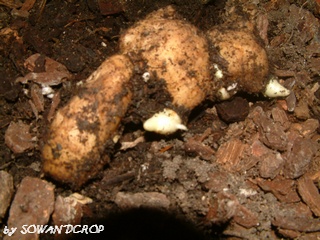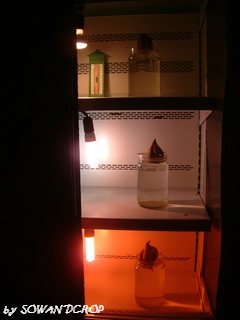Il kiwi è considerato un frutto esotico che si forma su piante rampicanti dotate di una sorta di liane, tipiche dell’Asia orientale, appartenente alla famiglia delle Actinidiaceae.
The kiwi fruit is considered an exotic fruit that originate from branches like creepers, a typical tree of Eastern Asia, and belonged to Fam. Actinidiaceae.
In Italia sono cultivate due vairetà di kiwi: quello verde, più rotondeggiante e buccia pelosa, e quello giallo o gold, più allungato e buccia glabra. Entrambi ricchi di piccoli semi neri all’interno della polpa.
A partire dai primi del ‘900 fu importato inpaesi che ne hanno poi iniziato la coltivazione. In Italia fu introdotto alla fine del XX° secolo: oggi, le maggoiri coltivazioni sono in Veneto, Pimonte e Lazio, e l’Italia risultanessere tra i primi produttori ed esportatori mondiali di kiwi, con Cina e Nuova Zelanda.
In Italy two varieties are grown: the green and the yellow one. The first has a shape more round and a hairy skin, the second (named also gold) is more starched and without hair. Both have little dark seeds into the pulp.
Till from the first years of XX century it was imported in other countries where its growing started. In Italy it arrived at the end of XX century and today the main farms are in Piedmont, Veneto and Lazio, so that Italy in considered one of the first world producer and exporter with China and New Zeeland .
Essendo una specie esotica, il kiwi per fruttificare necessita di un clima mite, (tra 5 e 25 °C) con temperature più basse i raccolti sono più scarsi.
It needs for produce fruits, of a mild climate (between 40 and 77 Fahrenheit), low temperatures don’t kill the tree but give less fruits.
Necessitano di molto spazio e potature regolari. Hanno un portamento rampicante quindi si devono fornire sostegni adeguati, senza i quali le piante si afflosciano.
They need of a large space and regular pruning. For their climbing structure they need of appropriate retaining structure, even if it drops.
Si sviluppano bene con un pH pari a 6-7 e con suolo fertile e ricco di materia organica.
Vanno piantate ad una distanza di 50 cm da un muro rivolto verso sud o verso ovest e al riparo dal vento forte, o contro una serie di fili di ferro orizzontali fissati a robusti pali (tipo vigna).
The soil has to be rich in organic materials and with a pH of 6-7.
The tree have to be planted 50 cm far the wall (looking to South or West) protected from strong wind. You can also use horizontal wiry lines, as a vineyard.
In primavera si esegue una pacciamatura con materiale organico.
In estate si devono legare i getti lungo i fili mano a mano che crescono tenendo presente che i frutti si formano sui getti cresciuti sul legno vecchio di un anno..
Per avere un raccolto più abbondante, a inizio estate si devono tagliare i getti che stanno fruttificando lasciando cinque foglie al di sopra dei frutti che si stanno formando: matureranno più velocemente.
In spring we make a cover with grass or starch on the soil.
During the summer the new branches are to be bound remembering that the fruits will grow themselves from one old year branches
Generalmente ci vogliono da 3 a 8 anni per fruttificare.
I kiwi maturano a inizio autunno.
L’inverno successivo si potano i rami che hanno già fruttificato e si legano i nuovi getti nati nell’anno in corso
It starts to produce fruits after 3 years, at worst 8, in late autumn.
The next winter we have to prune branches that have already produced, and we bound new branches (the ones grown in the year).
Negli anni passati era necessario coltivare un esemplare maschile ed uno femminile (uno ogni 5) per avere l’impollinazione.
Oggi ci sono sul mercato piante autoimpollinanti da cui però si ottengono frutti più piccoli.
Si deve tener presente che con la diffusione della pianta anche nei giardini privati spesso un maschio di “quartiere” serve tutte le femmine nel raggio di tre chilometri (area massima di volo delle api impollinatrici).
In the past years it is necessary growing one male every five female. This in spite of the fact that Kiwi is not able to fecund itself
Today there are auto pollinators tree and in town it is so diffuse that the male of the district is sufficiently for all the females inside a ray of three kilometers (area of bee working).








